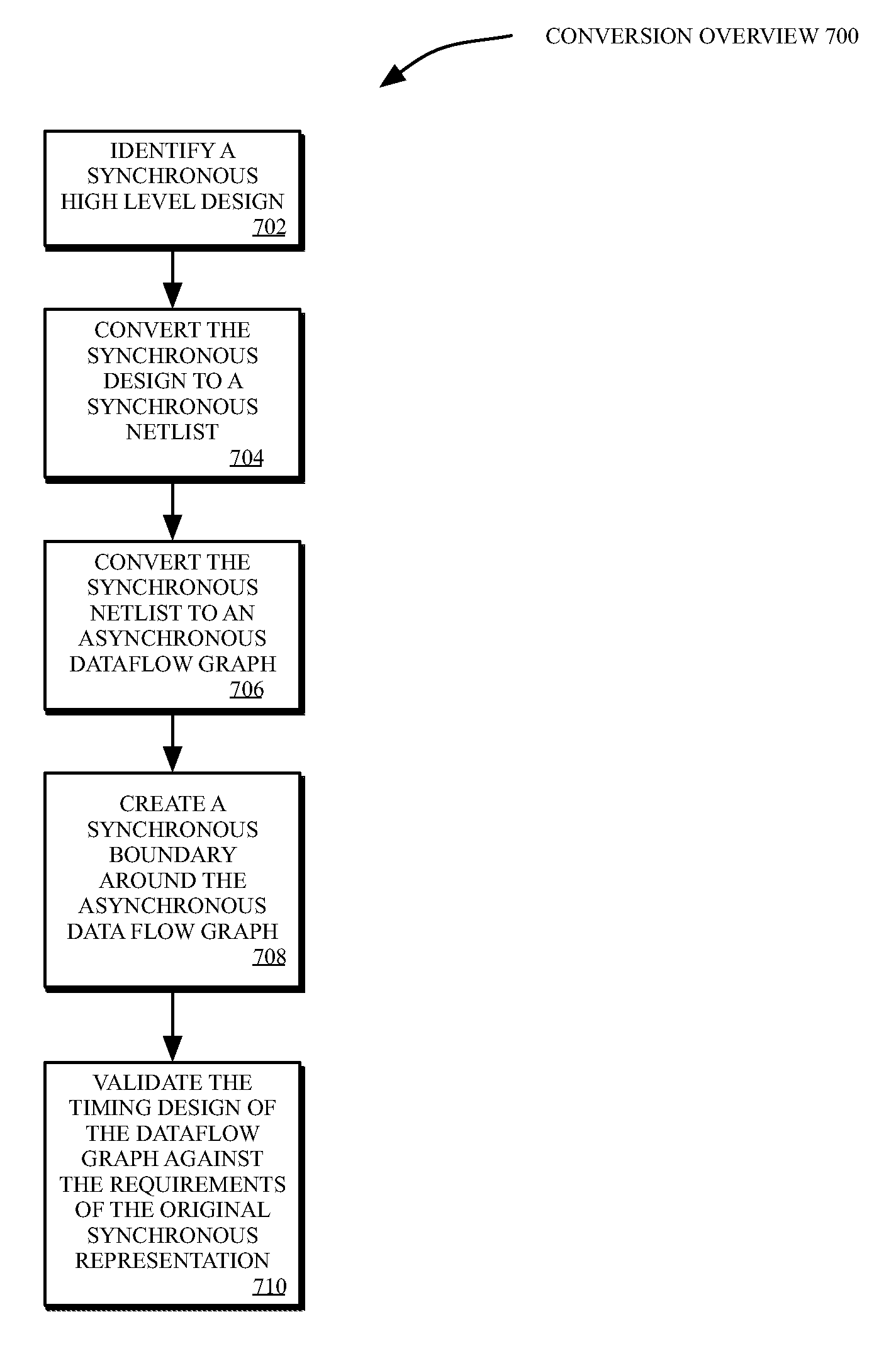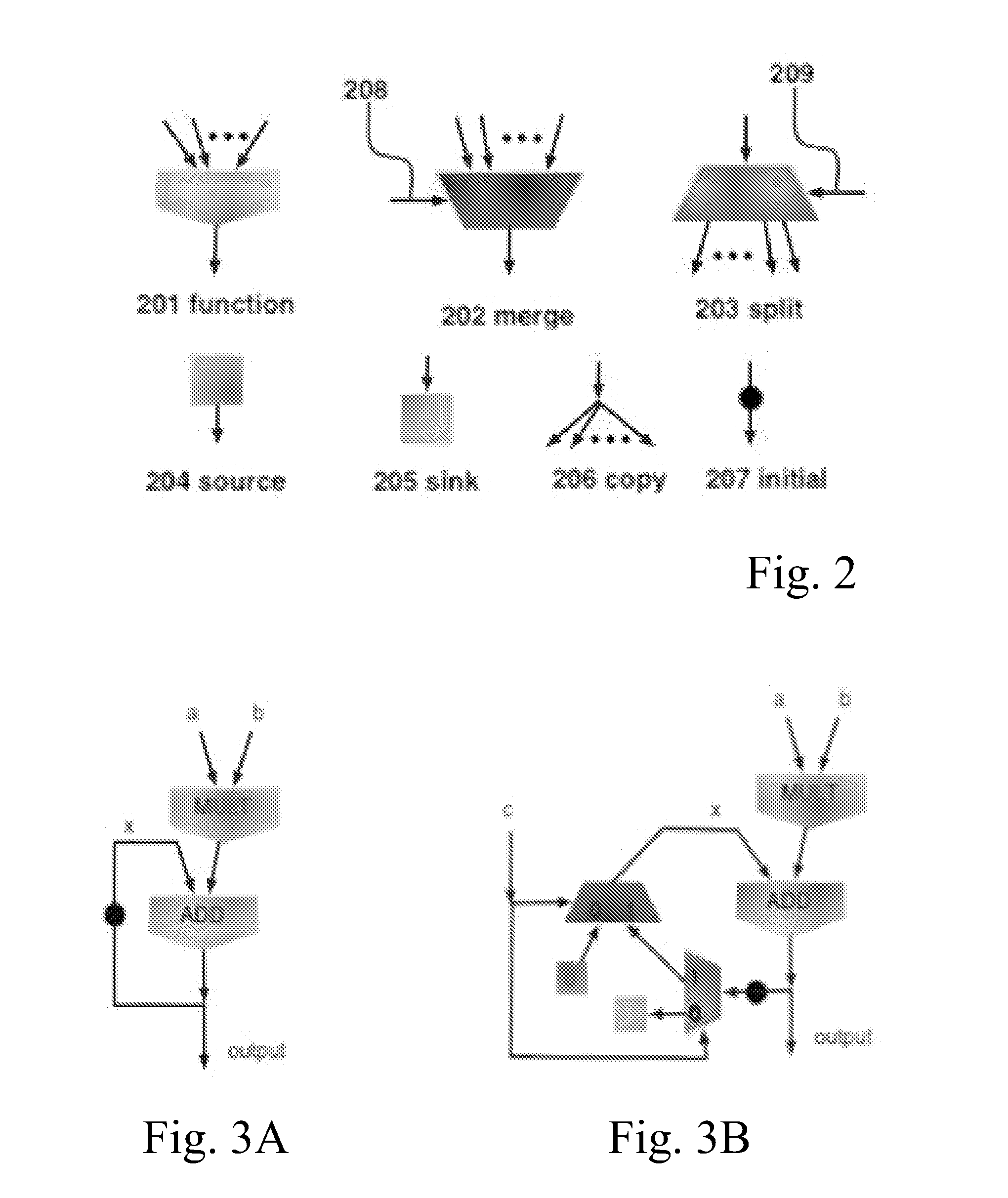Systems and methods for performing automated conversion of representations of synchronous circuit designs to and from representations of asynchronous circuit designs
a technology of synchronous circuit design and asynchronous circuit design, applied in the field of electronic circuit design, can solve the problems of time-consuming, inconvenient, and inability to meet the needs of designers, and achieve the effect of facilitating feedback to synchronous design tools
- Summary
- Abstract
- Description
- Claims
- Application Information
AI Technical Summary
Benefits of technology
Problems solved by technology
Method used
Image
Examples
Embodiment Construction
[0026]The invention is a method for converting a synchronous design into an asynchronous one with equivalent functionality. The method is general in that it can convert circuits with an arbitrary number of clock domains as long as the frequency of each clock domain is known beforehand. The method can also handle common features such as clock gating, combinations of positive edge-triggered and negative edge-triggered flip-flops, as well as latches. The method also includes provisions for making any asynchronous signal behave completely synchronously. This can be applied to the primary inputs and outputs of the circuit to hide the asynchronous nature of its core implementation, or to any intermediate signal to enable synchronous scan-testing or synchronous debugging of a design.
[0027]The input to the algorithm is a description of a synchronous netlist with additional auxiliary information that is normally required for synthesis. This information includes the set of clocks and their fr...
PUM
 Login to View More
Login to View More Abstract
Description
Claims
Application Information
 Login to View More
Login to View More - R&D
- Intellectual Property
- Life Sciences
- Materials
- Tech Scout
- Unparalleled Data Quality
- Higher Quality Content
- 60% Fewer Hallucinations
Browse by: Latest US Patents, China's latest patents, Technical Efficacy Thesaurus, Application Domain, Technology Topic, Popular Technical Reports.
© 2025 PatSnap. All rights reserved.Legal|Privacy policy|Modern Slavery Act Transparency Statement|Sitemap|About US| Contact US: help@patsnap.com



